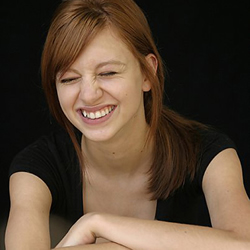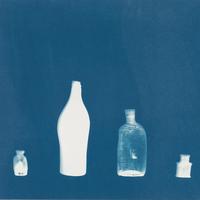More about elin o'Hara slavick
Works by elin o'Hara slavick

Sr. Editor
By her own admission, elin o’Hara slavick wears many hats.
Slavick is an interdisciplinary artist, photographer, curator, poet, teacher, critic, and activist. Raised by radical leftist parents, it is no surprise that Slavick incorporates political activism in all that she does. Her artistic practice is concerned with finding poetic ways to chronicle the subject of war, and often utilizes real artifacts from specific places of historical and political interest. Her husband, David Richardson, is an epidemiologist, and they often travel together, each working on their respective research projects.
One such opportunity led them to Hiroshima, Japan, where Richardson received a fellowship to study the ongoing health effects of radiation in the area from the atomic bomb deployed by the United States at the end of World War II. Slavick’s work from this time was also concerned with the A-bomb. She created cyanotypes, rubbings, and autoradiographs of actual A-bombed artifacts borrowed from the Hiroshima Peace Museum. Slavick draws parallels between radiation exposure and the process of photography involving exposure to light. Cyanotypes essentially use sunlight to imprint the shadow of their subject, obliterating all detail and simplifying an object down to just its outline and the density of its form. Slavick was inspired to use this method in response to the horrifying effects of the atomic bomb. As she explains: “It’s not the thing itself, it’s also the shadow. When the bomb exploded it basically incinerated people, plants, bridges, everything, leaving either black or white ‘death’ shadows.”
One of slavick’s other activism-based projects chronicles the myriad places around the globe that the U.S. has bombed, plotting the topography of the affected areas into hand-painted maps riddled with indications of locations that were hit. Slavick considers the work to be a protest against the violent acts perpetrated by the Army and CIA, many of which American citizens are either ignorant to, or distantly removed from. She describes the drawings as “manifestations of self-education on the subjects of U.S. military interventions, geography, politics, history, cartography, and the language of war.” Hoping to draw viewers in with the aesthetic appeal of the colorful patterns, the artist then juxtaposes the imagery with factual information about the specific bombing that reveals “the horror beneath the surface.” The drawings and accompanying text were compiled into a book titled “Bomb After Bomb: A Violent Cartography,” with a foreword written by Howard Zinn.
Another research-based photography project came about during a 6-month stay in Lyon, France. Slavick once again delved into the history the Second World War and Lyon’s role as the center for the French resistance against the Nazi occupation of Europe. Considering her interests, it makes sense that she would also be inspired by art movements that came about in response to WWII. Specifically, she published a book of Surrealist poems in 2018 titled “Cameramouth."
Sources
- Baker, Kenneth. “'After Hiroshima,' by Elin O'Hara Slavick.” San Francisco Chronicle, August 3, 2013. https://www.sfchronicle.com/books/article/After-Hiroshima-by-Elin-O-Har….
- Bradner, Liesl. “U.S. Bombing Seen through Artist's Eye in 'after Hiroshima' Book.” Los Angeles Times, August 3, 2013. https://www.latimes.com/entertainment/arts/culture/la-et-cm-hiroshima-a….
- elin o'Hara slavick. Accessed January 11, 2022. http://www.elinoharaslavick.com/.
- White, Amy. “On Hiroshima: Q&A with Elin O'Hara Slavick.” Burnaway, August 4, 2014. https://burnaway.org/magazine/temporal-rupture-performativity-artist-su….
Featured Content
Here is what Wikipedia says about Elin O'Hara Slavick
elin o'Hara slavick is an interdisciplinary artist, poet, professor, curator, critic and activist. She began teaching in the department of art at the University of North Carolina at Chapel Hill in 1994, where she held the titles of distinguished term professor, associate chair and director of graduate studies. Sheis currently the Artist-in-Residence in the College of Health Sciences, UC, Irvine. She was the Huntington Art and Research Fellow at Caltech in 2022.
Check out the full Wikipedia article about Elin O'Hara Slavick











